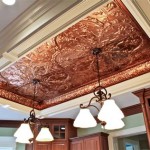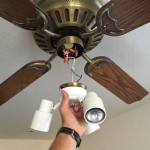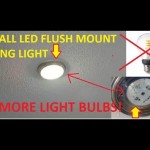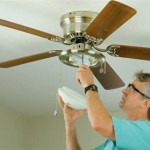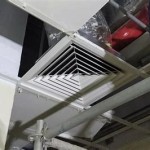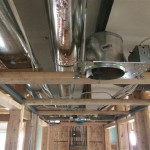How To Install Crown Moulding On Cathedral Ceilings
Installing crown moulding can significantly enhance the aesthetic appeal of any room. However, installing it on cathedral ceilings presents unique challenges due to the angles involved. This article provides a comprehensive guide on how to successfully install crown moulding on cathedral ceilings, ensuring a professional and visually appealing result.
The primary difference between installing crown moulding on a standard 90-degree wall and a cathedral ceiling lies in the angles that need to be considered. Standard walls have consistent, easy-to-calculate angles, but cathedral ceilings involve varying degrees of pitch that affect the cuts required for the moulding to fit seamlessly. Therefore, meticulous measurement, precise cutting, and careful installation are essential for a successful outcome.
Before embarking on the installation process, careful planning is paramount. This involves assessing the ceiling's angle, selecting the appropriate moulding, gathering the necessary tools, and thoroughly understanding the cutting techniques required. Skipping any of these steps can lead to errors and wasted material. This preparation phase sets the foundation for a smooth and efficient installation.
Determining the Ceiling Angle and Spring Angle
The first crucial step is accurately determining the ceiling angle. This angle is not always readily apparent and often requires the use of specialized tools. A protractor designed for angle measurement is ideal for this purpose. Place the protractor against the ceiling and wall to obtain a precise reading of the angle formed. For cathedral ceilings with varying peaks, measurements should be taken at multiple points to account for any inconsistencies. These multiple measurements ensure consistency throughout the installation.
In addition to the ceiling angle, understanding the "spring angle" is also essential. The spring angle refers to the angle at which the moulding sits against the wall and ceiling. Most crown moulding has a pre-determined spring angle, which is dictated by its design. Common spring angles are 38 degrees and 45 degrees, but other angles may exist. This information is typically provided by the moulding manufacturer. If the spring angle is not known, it can be determined by placing a small piece of the moulding against a flat surface and measuring the angle between the moulding's back and the surface. The spring angle dictates the miter saw settings required for cutting the moulding.
Once the ceiling angle and spring angle are known, it is possible to calculate the miter and bevel angles required for cutting the crown moulding. These calculations can be performed manually using trigonometric functions or, more conveniently, with online calculators specifically designed for this purpose. These calculators take the ceiling angle and spring angle as inputs and output the correct miter and bevel settings for the miter saw.
Accurate measurements and precise angle calculations are critical for a professional-looking installation. Errors in these initial steps can lead to gaps and misalignments that detract from the final result. Taking the time to carefully measure and calculate the angles will save time and frustration in the long run.
Selecting the Right Tools and Materials
Having the right tools and materials is another key factor in successfully installing crown moulding on cathedral ceilings. The following list outlines the essential items needed for this project:
- Crown Moulding: Select a style and size that complements the room's aesthetics and the ceiling height. Consider the material, with options ranging from wood to polyurethane.
- Miter Saw: A miter saw is indispensable for making accurate angled cuts. A compound miter saw, which allows for both miter and bevel cuts, is highly recommended for cathedral ceilings.
- Coping Saw: A coping saw is used to create cope joints for inside corners. This technique provides a tighter and more aesthetically pleasing fit than simply mitering inside corners.
- Nail Gun: A pneumatic or cordless nail gun is used to securely fasten the moulding to the wall and ceiling. Choose a nail gun with adjustable depth settings to avoid overdriving the nails.
- Air Compressor: If using a pneumatic nail gun, an air compressor is required to power the tool. Ensure the compressor has sufficient capacity to handle the nail gun's air consumption.
- Stud Finder: A stud finder is used to locate the wall studs for secure attachment of the moulding.
- Measuring Tape: A measuring tape is essential for accurately measuring the walls and moulding.
- Level: A level is used to ensure the moulding is installed straight and level.
- Protractor or Angle Finder: For measuring the ceiling angle with precision.
- Wood Filler or Caulk: Used to fill gaps and create a seamless finish. Paintable caulk is ideal for areas where the moulding meets the wall or ceiling.
- Safety Glasses and Hearing Protection: These are crucial for protecting your eyes and ears during the cutting and nailing process.
- Pencil: For marking cut lines and reference points.
- Construction Adhesive: Used in conjunction with nails for a stronger bond, especially on long runs of moulding.
Investing in quality tools and materials will contribute to a smoother and more professional installation. Skimping on the tools can lead to inaccurate cuts and insecure attachment, ultimately compromising the final result.
Cutting and Installing the Crown Moulding
With the angles calculated and the tools assembled, the actual cutting and installation process can begin. The process is different for inside and outside corners, and requires different cuts. A combination of mitered and coped joints often yields the best aesthetic result.
For
inside corners
, coping is often preferred over mitering. To cope a joint, first, miter one piece of moulding at a 45-degree angle, as if creating a regular mitered corner. Next, use the coping saw to carefully remove the material behind the cut line, following the profile of the moulding. This creates a contoured edge that will fit snugly against the adjacent piece of moulding. Coping allows for slight variations in the corner angle and provides a tighter, more seamless fit, especially in older homes where walls may not be perfectly square. When installing the coped piece, apply construction adhesive to the back and carefully position it against the adjacent moulding, pressing firmly to ensure a tight bond. The coped joint will hide any minor imperfections in the wall corner.For
outside corners
, mitering is the standard approach. Using the calculated miter and bevel angles, cut the two pieces of moulding that will meet at the outside corner. Test the fit before applying any adhesive or nails. If the corner is not perfectly square, the miter angles may need to be adjusted slightly to achieve a tight fit. Once the fit is satisfactory, apply construction adhesive to the back of the moulding and carefully position it against the wall and ceiling. Use the nail gun to secure the moulding to the wall studs and ceiling joists. It is best to use a finish nailer that can reach deep enough into the materials. Be sure to set the nail gun at the right depth to avoid damage to the moulding.For long runs of moulding, it is advisable to use scarf joints to connect multiple pieces. A scarf joint is a slanted cut that allows two pieces of moulding to be joined together seamlessly. The most common scarf joint is a 45-degree miter cut. Apply construction adhesive to the mating surfaces and clamp the pieces together until the adhesive dries. The scarf joint should be positioned over a wall stud or ceiling joist for added support. This ensures that the joint remains stable and prevents the moulding from separating over time.
After the crown moulding has been installed, the final step is to fill any gaps and imperfections with wood filler or caulk. Use wood filler for nail holes and larger gaps, and caulk for areas where the moulding meets the wall or ceiling. Smooth the filler and caulk with a putty knife or damp sponge to create a seamless finish. Once the filler and caulk have dried, sand the areas lightly and apply a coat of paint or stain to match the moulding. Be sure to completely cover the nail holes for a seamless finish. This final touch will enhance the overall appearance of the crown moulding and create a polished, professional look.
Throughout the installation process, it is important to prioritize safety. Wear safety glasses and hearing protection when cutting and nailing. Use caution when working on ladders or scaffolding. If you are not comfortable working at heights, consider hiring a professional installer. Safety should always be the top priority when undertaking any home improvement project.
Installing crown moulding on cathedral ceilings requires patience, precision, and attention to detail. By following these steps and taking the necessary precautions, it's possible to achieve professional results. The enhanced aesthetic appeal of the finished project will add value and beauty to any home.

How To Install Crown Molding On Vaulted Or Cathedral Ceilings The Joy Of Moldings

How To Install Crown Molding On A Vaulted Cathedral Ceiling Without Transition Piece

Installing Crown Molding Around A Cathedral Ceiling Fine Homebuilding

Installing Crown Moulding Part Two Canadian Woodworking

Install Crown Molding Cathedral Vaulted Ceiling

Installing Crown Moulding On A Sloped Ceiling Doityourself Com Community Forums

How To Install Crown Molding On Vaulted Or Cathedral Ceilings The Joy Of Moldings

Crown Molding On Angled Ceilings Makely

Install Crown Molding Cathedral Vaulted Ceiling

Installing Crown Molding On A Vaulted Ceiling Pro Construction Guide
Related Posts

